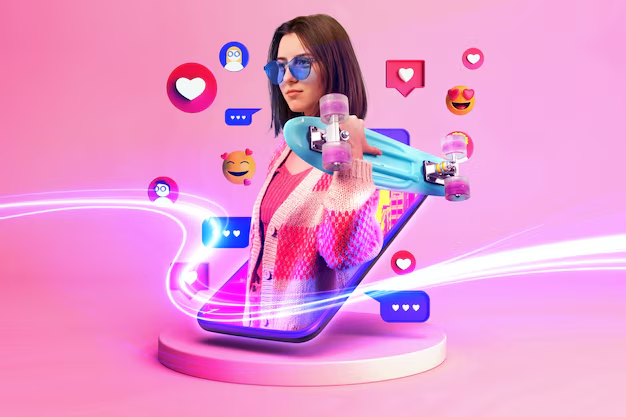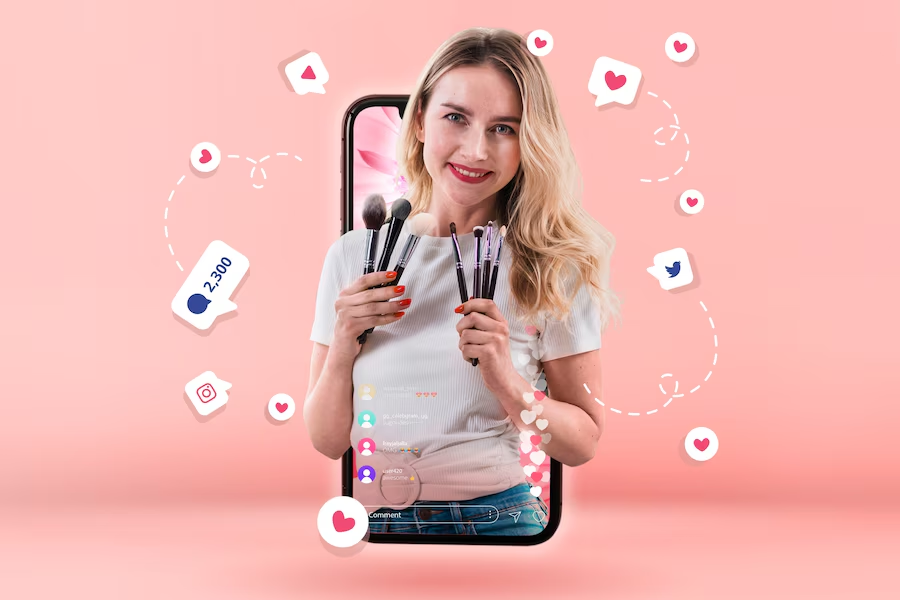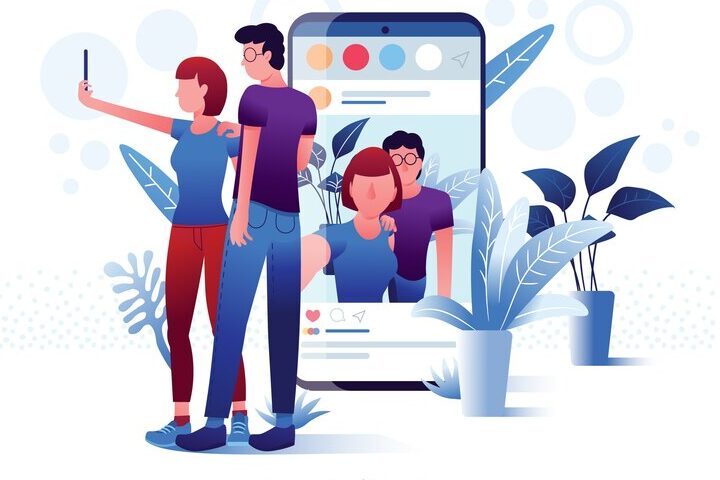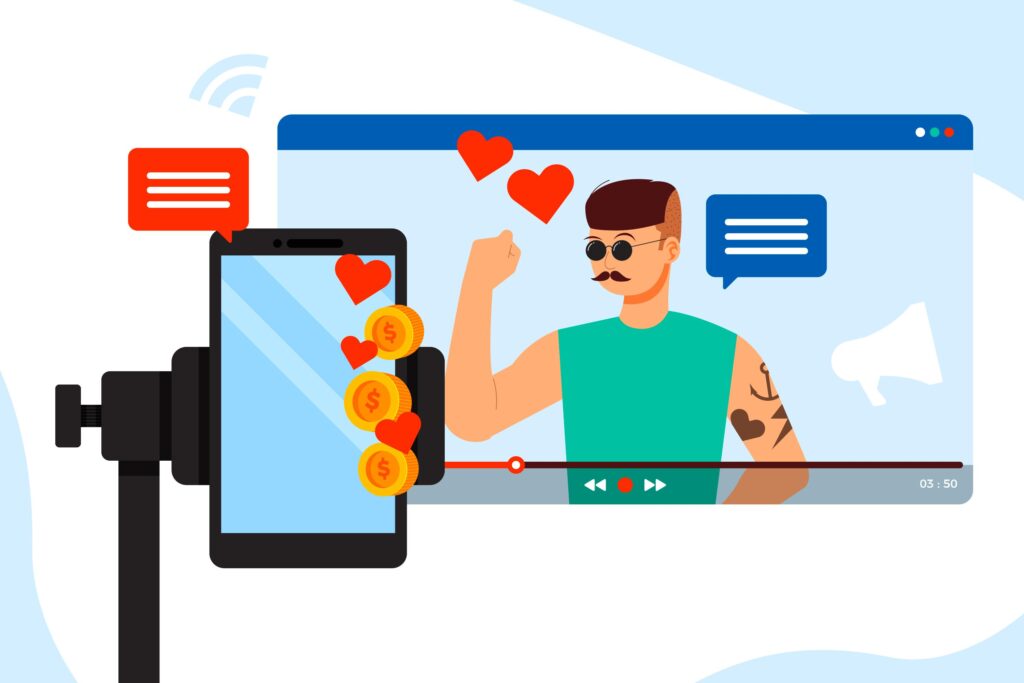In the past decade, social media influencers have gone from being niche personalities to becoming an essential part of modern marketing strategies. They have redefined how businesses connect with consumers, offering a more personal and authentic way of engaging with their target audience. In 2024, the rise of influencers continues to transform the marketing landscape, challenging traditional advertising and ushering in a new era of consumer interaction. This blog explores how influencers are reshaping modern marketing, why they are so impactful, and how brands can leverage this powerful tool for business growth.
1. Understanding the Influence: Why Influencers Matter
Influencers are individuals who have established credibility and a following on social media platforms. They range from everyday individuals with niche followings to celebrities with millions of followers. The power of influencers lies in their ability to influence their audience’s perceptions, behaviors, and purchasing decisions.
What Makes Influencers So Effective?

- Trust and Credibility: Unlike traditional advertisements, influencer content often feels more like a recommendation from a friend. This personal connection builds trust, which is why followers are more likely to act on an influencer’s suggestions.
- Engagement Over Reach: Influencers often maintain a high level of engagement with their audience. Whether through comments, likes, or shares, this direct interaction fosters a sense of community and loyalty.
- Authenticity: Influencers create content that resonates with their audience on a personal level, giving brands access to a much more authentic promotional channel than traditional advertising.
Key Takeaway:
Influencers are incredibly effective in modern marketing because they create a personal connection with their audience, which leads to higher engagement and greater trust.
2. The Growth of the Influencer Economy
The influencer economy has grown exponentially over the last few years. In 2024, the global influencer marketing industry is projected to be worth billions, with businesses investing heavily in influencer-driven campaigns. This growth is driven by the increased adoption of social media platforms and the changing behavior of consumers.
Why is Influencer Marketing Booming?
- Social Media Dominance: Platforms like Instagram, TikTok, YouTube, and Twitter are where the majority of people spend their time, making them prime spaces for influencer marketing.
- Changing Consumer Behavior: Consumers no longer respond to traditional advertising the way they once did. They seek more personalized, authentic experiences. Influencers offer this by integrating brands into their daily lives and content.
- Return on Investment (ROI): Many brands report that influencer marketing delivers better ROI than traditional advertising channels. Influencers can offer a highly targeted audience, and the trust they’ve built with their followers often leads to higher conversion rates.
Key Takeaway:
The influencer economy is a major force in modern marketing, driven by social media’s ubiquity and a shift in consumer expectations. Brands that tap into this economy can benefit from greater engagement and better ROI.
3. The Power of Niche Influencers

While celebrity influencers are still influential, niche influencers have emerged as powerful players in the marketing world. These influencers, often with smaller but highly engaged followings, can deliver more tailored and effective marketing campaigns.
Why Niche Influencers Are Gaining Popularity:
- Targeted Audiences: Niche influencers have deep connections with specific communities, allowing brands to tailor their messages to a highly targeted audience. For example, a beauty influencer might have followers who are passionate about cruelty-free makeup, making them the perfect person to promote sustainable beauty products.
- Higher Engagement Rates: Niche influencers often maintain higher engagement rates than larger influencers. Their smaller, more focused audience leads to more genuine interactions, which translates to higher conversion rates for brands.
- Cost-Effectiveness: Brands looking to maximize their marketing budgets can benefit from working with niche influencers. They often charge less than high-profile influencers, making them an attractive option for businesses of all sizes.
Key Takeaway:
Niche influencers are becoming a critical component of influencer marketing, offering brands a more targeted and cost-effective way to reach engaged audiences.
4. Authenticity and Transparency: The New Standards in Influencer Marketing
As influencer marketing continues to grow, authenticity and transparency have become critical factors. In 2024, audiences are more discerning than ever, and they expect influencers to be transparent about their brand partnerships.
Why Authenticity is Key:
- Consumer Skepticism: Audiences are becoming increasingly skeptical of overly commercialized content. Influencers who are genuine in their brand partnerships, who only promote products they believe in, and who maintain transparency with their followers are more likely to gain trust and loyalty.
- Ethical Considerations: There’s a growing trend for influencers to align with brands that share their values. Influencers who promote sustainable, ethical, or socially conscious brands are seen as more authentic, and their recommendations are more likely to resonate with their followers.
- Regulations: In many regions, influencers are now required to disclose when a post is sponsored or contains affiliate links. This has pushed the industry toward greater transparency.
Key Takeaway:
In 2024, authenticity and transparency will remain essential for influencers. Audiences want to know that the influencers they follow are being honest about their partnerships and are promoting products that align with their values.
5. Influencer-Brand Collaboration: The Future of Marketing
As influencer marketing continues to evolve, the relationship between influencers and brands is becoming more collaborative. Instead of one-off sponsored posts, influencers and brands are increasingly forming long-term partnerships that are mutually beneficial.

The Shift to Long-Term Partnerships:
- Greater Creativity: Long-term partnerships allow influencers to develop more creative and integrated content that aligns with both the brand’s and their own voice. This results in campaigns that feel more natural and authentic.
- Brand Loyalty: When influencers become consistent advocates for a brand, their followers are more likely to develop loyalty to the brand as well. This is especially true if the influencer’s relationship with the brand feels genuine and built on shared values.
- Co-Creation of Products: In some cases, influencers are even involved in the creation of new products or services. These collaborations can offer valuable insight into what an audience truly wants, resulting in products that are better received in the market.
Key Takeaway:
In 2024, the future of influencer marketing will be built on strong, long-term partnerships between influencers and brands. These collaborations will foster creativity, build brand loyalty, and drive long-term success.
Conclusion
The rise of influencers has revolutionized modern marketing, and it’s clear that they are here to stay. In 2024, influencers will continue to play a critical role in shaping consumer behavior, driving brand engagement, and delivering results for businesses. By embracing the power of influencers, focusing on authenticity, and leveraging niche audiences, brands can stay ahead of the curve and unlock new growth opportunities.

